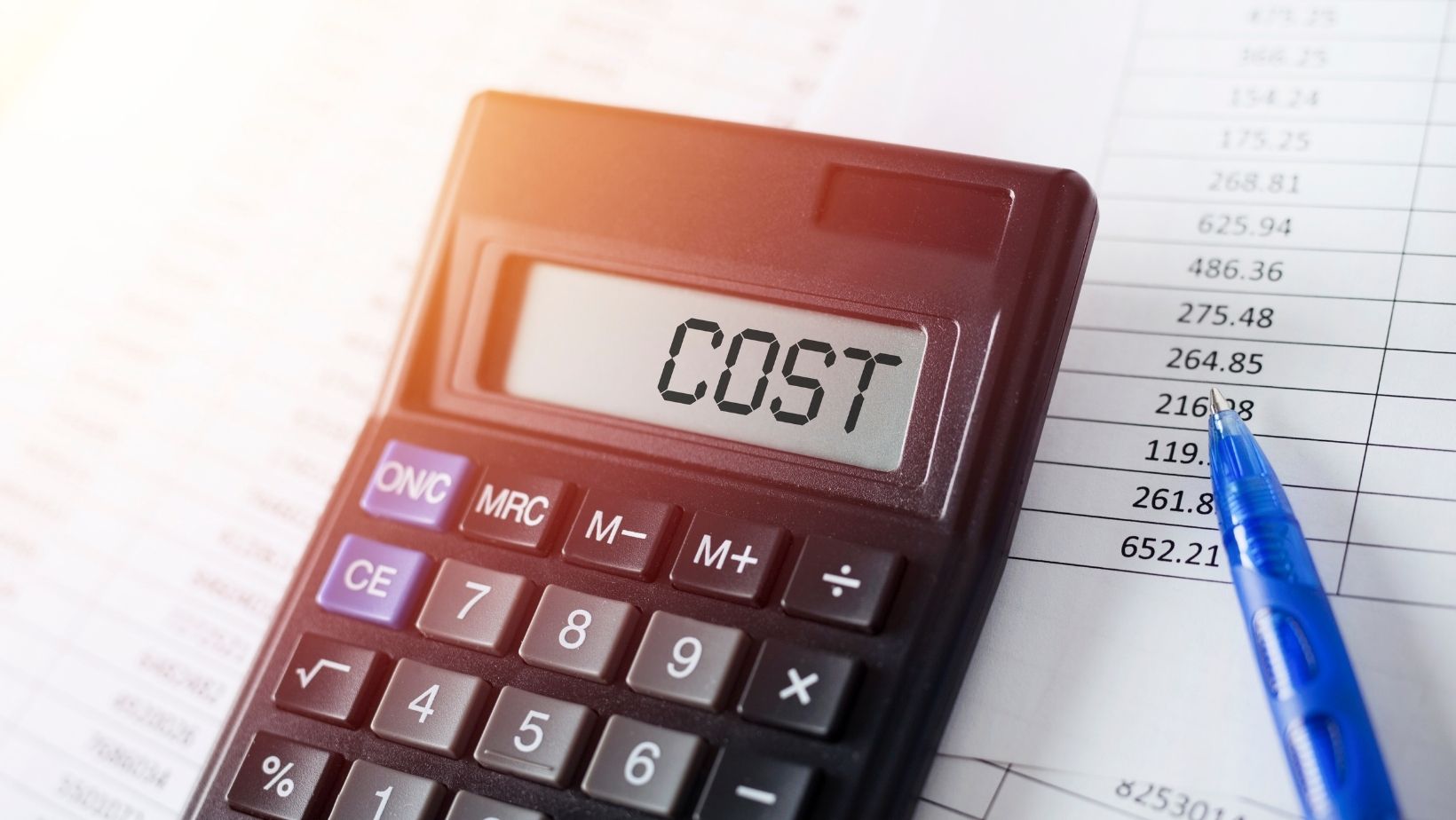Understanding the potential Google advertising cost is one of the first and most critical steps for any business looking to leverage the world’s largest search engine. As we navigate 2025, marketers and business owners are constantly asking: “How much should I budget for Google Ads?” The answer, however, is not a single number but a dynamic range influenced by dozens of factors. Unlike traditional advertising with fixed price lists, Google Ads operates on a live auction system. This means your costs are determined by your industry, your strategy, and the level of competition at any given moment. This guide acts as your comprehensive cost calculator, breaking down the pricing models, providing 2025 industry benchmarks, and offering actionable strategies to manage your advertising budget effectively and maximize your return on investment (ROI).
How Much Do Google Ads Cost?
The most direct answer to “How much do Google Ads cost?” is that you are in complete control. There are no minimum spending requirements or mandatory monthly commitments. You can set a daily budget of $5 or $50,000—the platform accommodates all levels of investment. However, the results you get for your spend are determined by the cost of individual actions, primarily clicks (CPC) or impressions (CPM).
The cost of your Google Ads campaigns is not a flat fee but the cumulative result of thousands of micro-auctions that happen every second. When a user types a query into Google, an auction begins among all advertisers wanting to show an ad for that search term. Your cost is influenced by two primary components:
- Your Bid: How much you are willing to pay for a specific action.
- Your Quality Score: A metric Google uses to rate the quality and relevance of your keywords, ad copy, and landing page experience. A higher Quality Score can lead to lower costs and better ad positions.
The key factors that will ultimately dictate your final advertising spend in 2025 include:
- Industry: Some industries are notoriously more competitive and expensive than others. A click for a “personal injury lawyer” keyword can cost over $100, while a click for “local handmade soap” might be less than a dollar.
- Campaign Goals: A campaign designed for brand awareness (paying for impressions) will have a different cost structure than a lead generation campaign (paying for clicks).
- Network: Costs vary significantly between the Google Search Network, the Google Display Network (GDN), and YouTube. The Search Network typically has a higher cost-per-click (CPC) due to higher user intent but often delivers a better conversion rate.
- Targeting: The more granular your targeting (specific locations, demographics, or audiences), the more the cost can fluctuate.
Essentially, you don’t pay for a “slot” on Google; you pay for performance. You can choose to pay per click, per thousand impressions, or per conversion, giving you the flexibility to align your ad spend directly with your business objectives.
What is Google Ads Cost Per Impression (CPM)?

While Cost-Per-Click (CPC) is the most talked-about pricing model, Cost-Per-Mille (CPM), which means Cost Per Thousand Impressions, is a vital metric for specific types of campaigns. An “impression” occurs every time your ad is shown on a search result page or another site on the Google Network. With CPM bidding, you are not paying for users to click on your ad; you are paying simply for your ad to be seen.
When is CPM used? CPM bidding is primarily used for brand awareness and visibility campaigns. The main goal is not to drive immediate actions like sales or form fills but to get your brand name, logo, and message in front of a large, relevant audience. This strategy is highly effective for:
- Launching a new product or service.
- Announcing a major company event or promotion.
- Building brand recognition in a new market.
- Reinforcing your brand message to stay top-of-mind.
You will most commonly encounter CPM bidding on the Google Display Network (GDN) and YouTube, where the primary objective is often visual exposure rather than immediate clicks.
How Much Does Google Ads’ Average Cost per Impression?
The average cost per impression on Google Ads varies dramatically based on the network and targeting. For 2025, here are the general benchmarks:
- Google Display Network (GDN): The average CPM on the GDN can range from $0.50 to $4.00. This is a wide range because the GDN includes millions of websites, apps, and videos with varying levels of quality and audience value.
- YouTube Ads: YouTube CPMs can be slightly higher, often averaging between $3.00 and $10.00, especially for premium placements (like ads on top-tier channels) or highly sought-after audience segments (like in-market audiences for high-value products).
- Google Search Network: The Search Network primarily operates on a CPC model. While Google does report impression data, CPM is not a bidding option for standard text ads. The focus here is on intent and clicks.
The cost is heavily influenced by the value of the audience you’re trying to reach. A CPM for a broad audience interested in “gardening tips” will be significantly lower than a CPM for a highly specific remarketing audience of users who have previously abandoned a high-value shopping cart.
2025 Google Ads Cost Benchmarks by Industry (CPC & CPM)
To give you a clearer picture, this table provides estimated average CPCs for the Search Network and average CPMs for the Display Network across various industries for 2025. These are baseline figures and can vary based on your specific strategy.
| Industry | Average CPC (Search Network) | Average CPM (Display Network) |
| Legal | $8.00 – $15.00+ | $2.50 – $5.00 |
| Finance & Insurance | $5.00 – $12.00 | $2.25 – $4.50 |
| Healthcare & Medical | $3.50 – $8.00 | $2.00 – $4.00 |
| Real Estate | $2.50 – $6.00 | $1.50 – $3.50 |
| B2B / Technology | $3.00 – $7.00 | $2.00 – $4.00 |
| E-commerce & Retail | $1.00 – $3.50 | $0.75 – $2.50 |
| Travel & Hospitality | $1.50 – $4.00 | $1.00 – $3.00 |
| Home Services | $4.00 – $9.00 | $2.00 – $4.50 |
| Education | $2.50 – $5.50 | $1.75 – $3.75 |
| Non-Profit | $1.00 – $3.00 | $0.50 – $2.00 |
What is a Good Average Cost Per Impression (CPM) for Google Ads?
A “good” CPM is entirely relative to your campaign’s goals and overall return on ad spend (ROAS). A low CPM is not inherently good if it represents impressions shown to an irrelevant audience that never converts. Conversely, a high CPM can be excellent if it represents highly targeted impressions shown to an audience that is very likely to become customers.
Here’s how to evaluate if your CPM is “good”:
- For Brand Awareness: Is your CPM low enough to allow you to reach a significant portion of your target audience within your budget? If your goal is mass reach, a CPM under $2.50 on the GDN is generally considered efficient in 2025.
- For Consideration/Engagement: Are the impressions driving other valuable metrics, like an increase in branded searches or website traffic (even if not from direct clicks)? A “good” CPM here might be higher, perhaps $3.00 – $6.00, if it correlates with positive brand lift.
- For Remarketing: For a highly qualified remarketing audience (e.g., users who visited a pricing page), a CPM of $10.00 or more can be considered “good” because the value of getting your message back in front of these warm leads is exceptionally high.
The ultimate test of a good CPM is its contribution to your ROI. If a $1,000 spend on a CPM campaign (e.g., 100,000 impressions at a $10 CPM) eventually leads to $5,000 in sales, that was a very good CPM.
How Do I Get the Lowest Score on My Google CPM?
While aiming for the absolute “lowest score” or number isn’t the right goal, optimizing for the most efficient and effective CPM is crucial. A lower CPM means your advertising budget goes further, buying you more visibility for the same amount of money.
Here are key strategies to lower your effective CPM in 2025:
- Improve Your Ad Creatives: Google rewards engaging ads. For display and video ads, this means using high-quality images and videos, clear branding, and a compelling call-to-action. A higher Click-Through Rate (CTR), even on a CPM campaign, signals to Google that your ad is relevant and can lead to better placements at a lower cost.
- Refine Audience Targeting: While hyper-specific targeting can increase CPM, poorly defined broad targeting is also inefficient. Use a layered approach. Start with broader affinity or demographic audiences and monitor performance. Then, create more specific in-market or custom audiences for those who perform well.
- Use Placement Exclusions: Regularly review where your display ads are being shown. If you see your ads appearing on low-quality websites, mobile apps (especially games), or irrelevant YouTube channels, add them to your placement exclusion list. This prevents wasted impressions and focuses your spend on valuable placements.
- Leverage Frequency Capping: Showing the same ad to the same person 20 times a day leads to ad fatigue and wasted money. Set a frequency cap (e.g., no more than 3 impressions per user per day) to maintain a positive user experience and stretch your budget.
- Test Different Ad Formats: Experiment with standard banner ads, responsive display ads, and various video ad formats. Responsive display ads are particularly effective as they allow Google’s AI to automatically assemble the best ad combination for a given placement, often improving performance and efficiency.
Why is My Google CPM So High?
If you’re looking at your campaign report and wondering why your CPM is soaring, it’s typically due to one or more of these factors:
- Intense Competition: You are targeting a very valuable and highly competitive audience. For example, trying to reach C-level executives with a B2B product will always have a higher CPM than reaching a general consumer audience.
- Narrow Targeting: A remarketing list with only 1,000 users is a small, highly valuable pool. The cost to reach this specific group will be high. The narrower your geographic, demographic, or audience targeting, the more you can expect the CPM to rise.
- Premium Placements: If you are specifically targeting top-tier websites (e.g., The New York Times) or popular YouTube channels through managed placements, you are paying a premium for that high-quality inventory.
- Low Ad Relevance or Quality: If your ad creatives have a very low CTR or engagement rate, Google’s system may determine your ad is not a good fit for the audience. To compensate, it may charge you a higher CPM to show it.
- Industry and Seasonality: Costs fluctuate. A retailer’s CPM will skyrocket during the holiday season (Q4), and a travel company’s CPM will rise during peak booking periods.
Troubleshooting a high CPM involves systematically reviewing your targeting, creatives, and placement reports to identify the cost driver and then testing optimizations to improve efficiency.
How Can I Use This Average Ad Cost Tool for Google Ads?
While this article can’t be an interactive software calculator, it provides the framework and data you need to forecast your Google Ads costs manually. Think of this section as a step-by-step guide to building your own budget estimate.
Here’s how to use this information as your ad cost forecasting tool:
Step 1: Define Your Primary Campaign Goal
Is your goal brand awareness or direct action?
- Awareness: You will be forecasting based on CPM (Cost Per Thousand Impressions).
- Action (Clicks/Leads): You will be forecasting based on CPC (Cost Per Click). For this example, let’s focus on a CPM-based awareness campaign.
Step 2: Estimate Your Desired Reach
Determine the size of the audience you want to reach. Let’s say you want your ad to be seen 200,000 times over the next month.
- Total Desired Impressions = 200,000
Step 3: Find Your Industry’s Average CPM
Refer back to the 2025 Google Ads Cost Benchmarks table. If you are in the E-commerce & Retail industry, you can see the average CPM on the Display Network is between $0.75 and $2.50. To be safe and realistic, let’s choose a middle-ground estimate.
- Estimated CPM = $1.75
Step 4: Calculate Your Estimated Budget
Now, use the classic CPM formula to calculate your projected cost:
Estimated Budget=(1000Total Desired Impressions)×Estimated CPM
Plugging in our numbers:
Estimated Budget=(1000200,000)×$1.75
Estimated Budget=200×$1.75=$350
This calculation gives you a solid baseline. You can estimate that it will cost approximately $350 to achieve your goal of 200,000 impressions in the retail sector.
Step 5: Refine and Add a Buffer
This estimate is a starting point. Your actual costs will vary. It’s wise to add a 15-20% buffer to your initial budget for testing, optimization, and market fluctuations. In this case, a safe starting budget would be around $400 – $420.
By following these steps, you can transform the data in this guide into a powerful, personalized forecasting tool that helps you set realistic budgets and clear expectations for your Google Ads campaigns in 2025.

